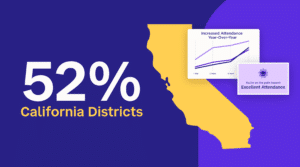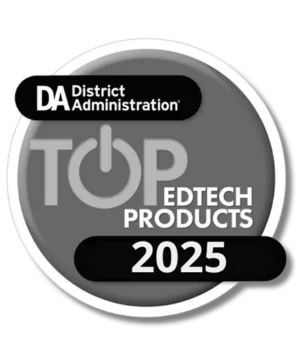
Featured Resource
Why Over Half of California School Districts Trust SchoolStatus
Read More >Join Mission: Attendance to reduce chronic absenteeism in 2025-26! >> Learn How <<





Published in the September 2023 issue of District Administration Magazine
According to research, superintendents are eager to have more information to make data-informed decisions and ensure the success of the students in their districts. A survey conducted in 2022 by the Data Quality Campaign and The School Superintendents Association revealed that 98% of respondents believed that “better access to data would help them be more confident in their ability to make informed decisions for their districts.”
How can superintendents establish systems and processes that help them use data efficiently and provide better support to students? As a data scientist, I collaborate with districts, schools and administrators across the country, assisting them in extracting actionable insights from their data to enhance communication and pave the way for improved student outcomes.
Below are three tips for K12 schools and districts on effectively using data to support student success:
Leveraging student data to improve communication with families is a powerful strategy for educators seeking to cultivate stronger relationships and enhance student outcomes. Caregivers are allies in understanding students’ home life and extending opportunities for learning outside the classroom.
Student data can also provide valuable insights into communication gaps between teachers and families. By analyzing Family-teacher engagements, administrators can identify families who haven’t been contacted for the year, determine whether or not communication is shared, and track methods of engagement. Understanding these trends enables administrators to tailor communication strategies to individual needs to support more meaningful conversations between their schools and families.
Every school district has various sources of student and school data—from grades and attendance to state assessments, benchmarks, and discipline logs—often stored on different platforms and even in manually updated spreadsheets. Big picture trends and areas that need attention are easily overlooked when data lives in separate silos. Adopting school analytics and communications platforms that integrate with existing district systems and data sources enables educators to view all this information in a unified, live dashboard and do more with the data the district is already investing in.
Having data all in one place paints a more complete picture of students’ and schools’ educational standing. When a single platform displays exam and attendance data together, for instance, administrators can identify chronically absent students and simultaneously see the impact of these absences on academic outcomes. At-risk profiles can become more nuanced, to include more than one criterion, and the relationships between variables can be explored and revealed.
How administrators communicate with families about data matters. Many families may feel overwhelmed by complex educational terminology or struggle to interpret student data. To build trust and encourage effective collaboration, district administrators should try to share data with families and caregivers in a clear and accessible manner, focusing on what the data means for their children.
When reviewing a student’s record with a caregiver, it is crucial to explain any key terms or metrics and provide guidance on how they can use this information to support their child’s learning.
Moreover, communicating with caregivers about student data in their native language is critical. Communication platforms with built-in translation capabilities can ensure more meaningful and clear communication with all student families.
With data-driven communication strategies, district administrators can effectively address individual student needs, share progress updates and empower families as active stakeholders in their child’s educational journey.
 Dr. Joy Smithson
Dr. Joy SmithsonData Scientist
Dr. Joy Smithson is a data scientist at SchoolStatus, where she works with districts all over the country to help educators use data to inform decisions and support student success. Dr. Smithson sees her role as a dual mission: first, understanding educators' pressing research questions, and second, translating vast datasets into actionable insights to address those queries. While her social sciences background once made her feel like an outsider in education, she now leverages her expertise in analyzing, interpreting, summarizing, visualizing, and wrangling data to support educators. Outside work, Dr. Smithson embraces trail running and relishing the exploration of new cities at dawn.
News, articles, and tips for meeting your district’s goals—delivered to your inbox.





















Ready to learn more about our suite of solutions?
